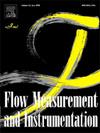利用图像梯度提高低速流动和异质播种条件下的 LSPIV 精确度
IF 2.3
3区 工程技术
Q2 ENGINEERING, MECHANICAL
引用次数: 0
摘要
河流和渠道的流量测量对于水资源管理和基础设施规划至关重要,尤其是在气候变化的背景下。然而,机械式流速仪和水声仪器等传统方法在成本、侵入性和可及性方面都存在局限性。近年来,基于图像的测速技术因其非接触性和成本效益而成为有前途的替代方法。然而,挑战依然存在,尤其是在精确测量所需的表面示踪剂的均匀分布方面。这些挑战在涉及人工播种的情况下尤为突出,因为确保均匀分布是一个重大障碍。为解决这一问题,本研究提出了一种基于像素强度梯度指标的过滤大规模粒子图像测速仪(LSPIV)数据的新方法。该方法在低流量条件下的各种实地测量中进行了评估,涵盖了广泛的播种特性。评估结果表明,平均表面速度剖面估计有所改进,与不使用滤波器相比,归一化均方根误差最多可减少 70%。此外,评估结果还与有经验的 LSPIV 用户通常使用的滤波器进行了比较,如背景减除和交叉相关系数阈值,结果表明使用所建议的滤波器后,情况有所改善。建议策略的实施减少了 LSPIV 实施过程中的主观性,尤其是对该技术了解有限的用户而言,同时也需要最小的后处理工作量。预计该方法可集成到现有的软件工具中,从而使图像测速专业知识有限的人员更容易使用 LSPIV。总之,该方法有助于以具有成本效益的方式扩大水文信息的可用性,特别是在资源有限的地区。本文章由计算机程序翻译,如有差异,请以英文原文为准。
Enhancing LSPIV accuracy in low-speed flows and heterogeneous seeding conditions using image gradient
Flow measurement in rivers and channels is crucial for water resource management and infrastructure planning, especially under the context of climate change. However, traditional methods like mechanical current meters and hydroacoustic instruments face limitations in terms of cost, intrusiveness, and accessibility. In recent years, image-based velocimetry techniques have emerged as promising alternatives due to their non-contact nature and cost-effectiveness. Nevertheless, persistent challenges remain, particularly concerning the uniform distribution of surface tracers necessary for precise measurements. These challenges are particularly pronounced in cases involving artificial seeding, where ensuring uniform distribution poses a significant obstacle. To address this issue, this study presents a novel methodology for filtering Large Scale Particle Image Velocimetry (LSPIV) data based on indicators of pixel intensity gradients. The methodology was evaluated across various field measurements under low flow conditions, encompassing a wide range of seeding characteristics. The evaluations demonstrated improvements in mean surface velocity profile estimation, showing reductions of up to 70 % in normalized root mean square error compared to not using filters. Additionally, the results were compared with filters typically employed by experienced LSPIV users, such as background subtraction and cross-correlation coefficient thresholds, showing improvements with the proposed filter. Implementation of the proposed strategy reduces the subjectivity in LSPIV implementation, particularly for users with limited knowledge of the technique, but also require minimal post-processing efforts. The methodology is anticipated to be integrated into existing software tools, thereby enhancing the accessibility of LSPIV for individuals with limited expertise in image velocimetry. Overall, this methodology facilitates cost-effective expansion of hydrological information availability, particularly in resource-constrained regions.
求助全文
通过发布文献求助,成功后即可免费获取论文全文。
去求助
来源期刊

Flow Measurement and Instrumentation
工程技术-工程:机械
CiteScore
4.30
自引率
13.60%
发文量
123
审稿时长
6 months
期刊介绍:
Flow Measurement and Instrumentation is dedicated to disseminating the latest research results on all aspects of flow measurement, in both closed conduits and open channels. The design of flow measurement systems involves a wide variety of multidisciplinary activities including modelling the flow sensor, the fluid flow and the sensor/fluid interactions through the use of computation techniques; the development of advanced transducer systems and their associated signal processing and the laboratory and field assessment of the overall system under ideal and disturbed conditions.
FMI is the essential forum for critical information exchange, and contributions are particularly encouraged in the following areas of interest:
Modelling: the application of mathematical and computational modelling to the interaction of fluid dynamics with flowmeters, including flowmeter behaviour, improved flowmeter design and installation problems. Application of CAD/CAE techniques to flowmeter modelling are eligible.
Design and development: the detailed design of the flowmeter head and/or signal processing aspects of novel flowmeters. Emphasis is given to papers identifying new sensor configurations, multisensor flow measurement systems, non-intrusive flow metering techniques and the application of microelectronic techniques in smart or intelligent systems.
Calibration techniques: including descriptions of new or existing calibration facilities and techniques, calibration data from different flowmeter types, and calibration intercomparison data from different laboratories.
Installation effect data: dealing with the effects of non-ideal flow conditions on flowmeters. Papers combining a theoretical understanding of flowmeter behaviour with experimental work are particularly welcome.
 求助内容:
求助内容: 应助结果提醒方式:
应助结果提醒方式:


